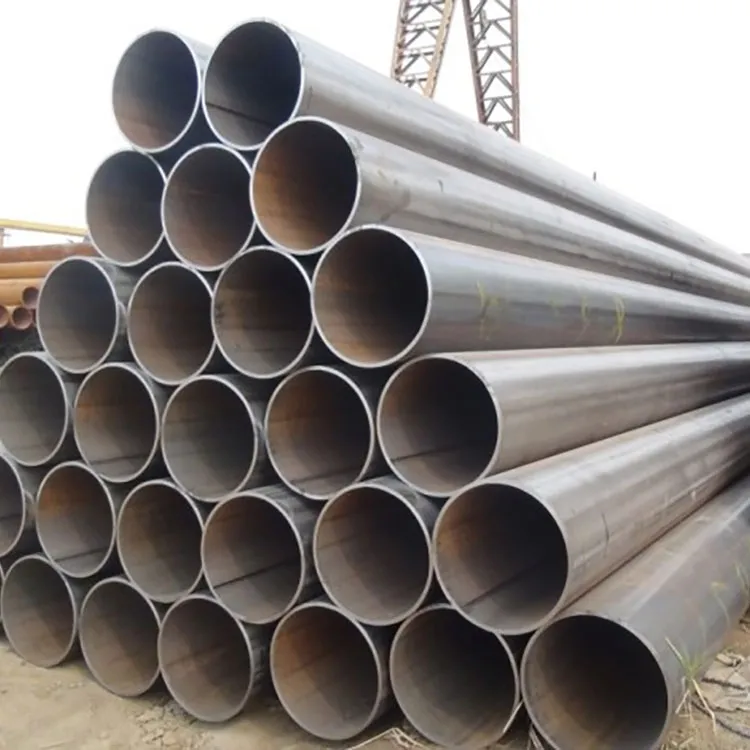Black Steel vs. Galvanized Steel Pipes: Which is Right for Your Project
2024-10-26
When embarking on a construction, plumbing, or industrial project, the choice between black steel and galvanized steel pipes can have a significant impact on both performance and costs. Each type of pipe has its own strengths and limitations, making it essential to understand which one is best suited to your project’s needs. In this blog, we’ll dive deeper into the factors that should guide your choice between black steel and galvanized steel pipes.
1. Environmental Suitability: Moisture and Corrosion Exposure
One of the first factors to consider is how much moisture exposure your project will encounter:
- Black Steel Pipes: Ideal for indoor projects or applications where water exposure is minimal. Black steel is frequently used in gas lines, indoor fire suppression systems, and structural installations where rusting is less of a concern.
- Galvanized Steel Pipes: Designed to withstand wet environments, galvanized pipes are well-suited for water transport and outdoor use. However, over time, water with high mineral content or acidity can wear down the zinc coating, reducing their longevity.
Assessing the environment and exposure to moisture will help ensure that you choose a pipe that delivers long-term durability without unnecessary maintenance.
2. Mechanical Strength and Pressure Tolerance
Both black and galvanized steel pipes are strong, but their specific strength characteristics differ:
- Black Steel Pipes: Known for their strength and durability, black steel pipes can handle high pressure, making them ideal for gas lines, steam pipes, and other applications involving pressurized fluids. They can also withstand the impact, which is useful in structural and industrial applications.
- Galvanized Steel Pipes: While strong, galvanized pipes are more susceptible to damage in high-pressure environments, as the zinc coating can wear off under stress. They work well in applications that don’t require high pressure, such as water transport and certain outdoor uses.
Considering the pressure and stress conditions of your project will guide you toward the most appropriate pipe material.
3. Cost Efficiency and Budget Allocation
Cost is always a key consideration in material selection:
- Black Steel Pipes: These pipes are more economical than galvanized steel, especially for projects that do not require corrosion protection. Black steel pipes are a cost-effective choice for gas lines or structural applications where water contact is not an issue.
- Galvanized Steel Pipes: With their zinc coating, galvanized pipes have a higher upfront cost. However, they provide excellent value for water transport and outdoor use where longevity and corrosion resistance justify the expense.
For budget-conscious projects that don’t require water or outdoor durability, black steel may be the best choice. However, the initial cost of galvanized steel can pay off in environments where rust and weather exposure are concerns.
4. Health and Safety Considerations for Water Transport
The intended use of the pipes, especially for water transport, influences which option is safer:
- Black Steel Pipes: These pipes are not recommended for potable water because rust can accumulate over time, leading to contamination. They are safe for gas transport and structural support but should be avoided for drinking water.
- Galvanized Steel Pipes: Galvanized steel can be used for non-potable water supply, although health concerns around zinc particles leaching into water over time have led to a decline in their use in new plumbing systems. Copper and PEX piping have become more popular for potable water.
If your project involves potable water, it’s worth considering alternative materials. However, galvanized steel can be a viable option for certain outdoor or non-potable applications.
5. Installation and Maintenance Considerations
Ease of installation and future maintenance needs can differ between black steel and galvanized pipes:
- Black Steel Pipes: They are easier to cut and weld, which simplifies installation for indoor applications. Their maintenance requirements are generally low in gas lines but should be inspected periodically if rust is a concern.
- Galvanized Steel Pipes: Installation can be more challenging, as cutting galvanized pipes releases zinc particles, requiring proper safety measures. Over time, the zinc coating may wear off, especially in harsh environments, necessitating occasional inspections and replacement if corrosion occurs.
By considering the ease of installation and maintenance needs, you can select a pipe type that aligns with your project’s practical requirements.
When deciding between black steel and galvanized steel pipes, it’s essential to weigh the project’s environment, pressure requirements, cost, and maintenance needs. Black steel pipes offer a strong, cost-effective solution for indoor and gas line applications, while galvanized steel pipes provide durability and corrosion resistance for water supply lines and outdoor projects. By carefully evaluating these factors, you can select the most suitable pipe type to ensure the longevity, safety, and efficiency of your project.



